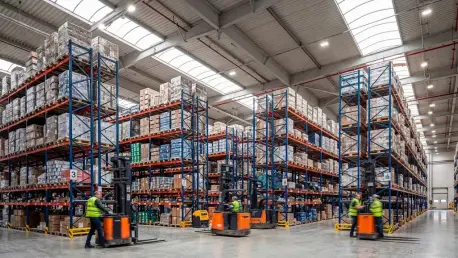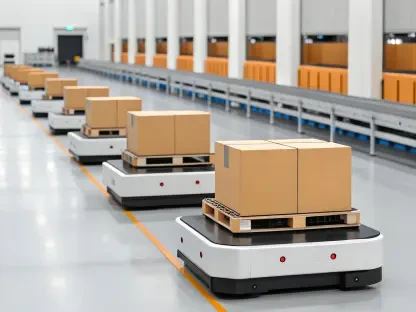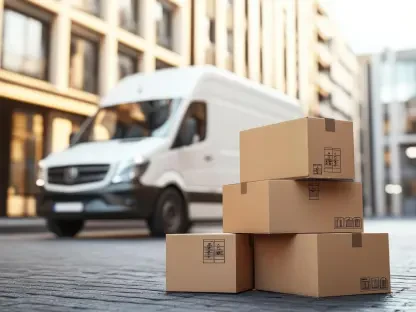Diving into the world of facility maintenance and protective coatings, I’m thrilled to sit down with Rohit Laila, a veteran in the logistics industry with decades of expertise in supply chain and delivery. Rohit’s passion for integrating technology and innovation into facility management makes him the perfect person to guide us through the critical aspects of maintaining safe and efficient workspaces. Today, we’ll explore the impact of proactive maintenance on safety and operations, the role of timely repairs, and how protective coatings can transform a facility into a safer, more organized environment.
How does a well-maintained facility influence both safety and operational efficiency in a logistics hub or warehouse?
A well-maintained facility is the backbone of safety and efficiency. When floors, loading bays, and walkways are in good condition, you drastically reduce risks like trips or falls for employees and visitors. It’s not just about avoiding accidents; it’s about creating a space where people can move confidently. On the operational side, proper maintenance ensures that equipment and vehicles aren’t damaged by uneven surfaces or potholes, which keeps workflows smooth. Downtime from injuries or equipment issues can cost a fortune, so staying ahead of wear and tear is a game-changer.
What kinds of damage do you often see in high-traffic facilities like warehouses, and how do small issues escalate if ignored?
In warehouses and manufacturing sites, damage often shows up as cracks, chips, or potholes in concrete floors, especially in areas with heavy footfall or machinery. Loading docks and steps take a beating from constant use, and you’ll see worn thresholds or uneven surfaces around doorways. If you ignore small cracks, they don’t stay small. Continuous traffic grinds them deeper, and water or debris gets in, accelerating deterioration. What starts as a minor fix can turn into a major repair job, disrupting operations and racking up costs.
What strategies can facility managers use to catch and address maintenance issues before they become major problems?
Regular inspections are key. Walking the facility routinely to check high-traffic zones for early signs of damage—like chips or uneven spots—can save a lot of headaches. But it’s not just on the managers; involving the whole team makes a huge difference. If everyone knows to report issues as soon as they spot them, you’re catching things early without needing constant full-site checks. Having a simple reporting process, like a shared log or app, empowers staff and lightens the load on the maintenance team.
Why is speed so critical when it comes to repairing damage once it’s identified?
Acting fast on repairs stops small problems from becoming big hazards. A quick fix on a crack prevents someone from tripping or a forklift from getting damaged, which could halt operations. It also avoids broader disruptions—think about a loading bay being out of service for days because a small hole wasn’t patched. Keeping repair materials like fast-curing epoxy mortars on-site is a smart move. You can patch things up in hours, not days, and get the area back in use with minimal downtime.
How do protective coatings add value to a facility after repairs are done?
Coatings are like a shield for your surfaces. Once you’ve repaired a floor or step, applying a coating protects it from the daily grind—foot traffic, machinery, spills, you name it. They’re especially useful in areas prone to moisture or where cleanliness matters, like loading docks or workshops. Beyond durability, coatings can enhance safety with anti-slip properties, giving grip in wet or tricky spots. They’re a long-term investment that cuts down on future repairs and keeps the facility looking sharp.
In what ways can coatings improve visibility and organization within a busy facility?
Coatings can do wonders for guiding people through a space. Bright or contrasting colors on walkways or darker corners make it easier for staff to navigate safely, especially in dim areas. When paired with line marking, coatings help define zones—separating pedestrian paths from vehicle routes or marking inventory spots. This clarity reduces congestion and minimizes the chance of accidents. It’s a simple way to keep traffic flowing smoothly, whether it’s people or forklifts.
What’s a key consideration for facility managers when applying protective coatings to ensure they last?
Preparation is everything. Before applying any coating, the surface needs to be clean, dry, and free of dust or grease. If you skip this, the coating won’t stick properly, and you’ll be back to square one in no time. Taking the time to prep right, and following guidelines on mixing and curing, ensures the finish holds up under pressure. Also, if time’s tight, opting for fast-drying coatings can get the area back in action quickly without sacrificing quality.
What’s your forecast for the future of facility maintenance and the role of innovations like protective coatings?
I see facility maintenance becoming even more proactive with the help of technology. We’re already seeing smart sensors and IoT devices that can monitor wear and tear in real-time, alerting managers to issues before they’re visible. Protective coatings will evolve too, with more sustainable, durable options that can withstand harsher conditions while being easier to apply. The focus will shift toward integrating these innovations to not just maintain but enhance facilities, making them safer and more efficient as logistics demands grow.









